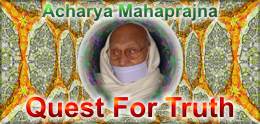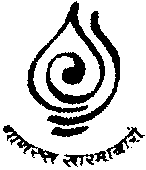
Karma is paudgolik or material and so insentient. It cannot be one who motivates action. The soul as a substance, acquires a certain state in the form of passions (attachments and aversions). Because of this, karmic matter gets attracted to it. It feeds the kashaya. This is how the process of kashaya begetting karma and karma begetting kashaya goes on. Perverted views, cravings, absence of self-realization are the three states that cause the influx of karma.
Yet, in actuality these are all subsisting karma. Mental, verbal and physical actions are also the causes of influx of karmas. But they do not have the capacity of binding together the atoms of karma. With the subduing of passions, the karmic matter that flows because of activity gets attached to the karmic body in the first instant, gets freed the next and in the third dies automatically, just the way the dry sand when thrown on a wall, touches it and then slides down to the ground.
There are three states of karma - touched, bound and touched-cum-bound. When the net of passion falls off then the karmic matter of only action touches the soul. Bondage of long duration or intense bondage is possible only if there is kashaya. Most of our emotions are born out of a state of kashaya. Karma is caused only by long-standing or excessively sensuous passions. Raging sentiments, arrogance, deceit, greed, are all waves of passion. Fear, grief, disgust and libido are parasites feeding on passion. The experience of these emotional parasites is intense. That moment in which we experience only the pure consciousness is a moment of subdued passions. In those moments when we experience sensations, then apparently or otherwise the conscious is mixed with passions. A fakir once visited the home of Sant Rabeya. He saw a book lying on the table. He started browsing through it. On one page it was written, "Hate the devil." Rabeya, it seems, had tore off the page. Asked the fakir, "What is this? Who tore the pages of this sacred book?" Sant Rabeya said, "I did." The fakir asked, "Why?" Replied the saint, "I did not like it." "How can it be possible that you do not like what is written in the sacred book? Is it not right?" asked the fakir. Replied Sant Rabeya, "Once I too used to think it was right; but not any longer." "How is that?" asked the fakir. Said Sant Rabeya, "Till my feeling of amity was not awakened, my eyes of amity were not opened; I too felt one should hate the devil, not love him; the sentence appeared correct. But now my eyes of amity have opened. Now I have nothing to hate. I am just not able to hate. The eyes of amity do not know to differentiate - to love one and to hate another."
When we are in the kashaya chetana we feel love for some and hatred for some others. If we think of some as supportive, we think of some others as inimical. There is nothing as likes or dislikes. When our kashaya chetana subsides, then these thoughts disappear. Then we have only pure knowledge - Nobody is the loved one and nobody the hated one. No one is in favour and no one out of favour. No one is supportive and no one inimical. In this state karma is not binding.
 Acharya Mahaprajna
Acharya Mahaprajna


